Greubel Forsey
In conversation with Stephen Forsey
Greubel Forsey
In conversation with Stephen Forsey
Revolution catches up with one half of Greubel Forsey after his appearance at Dubai Watch Week’s London Horology Forum.
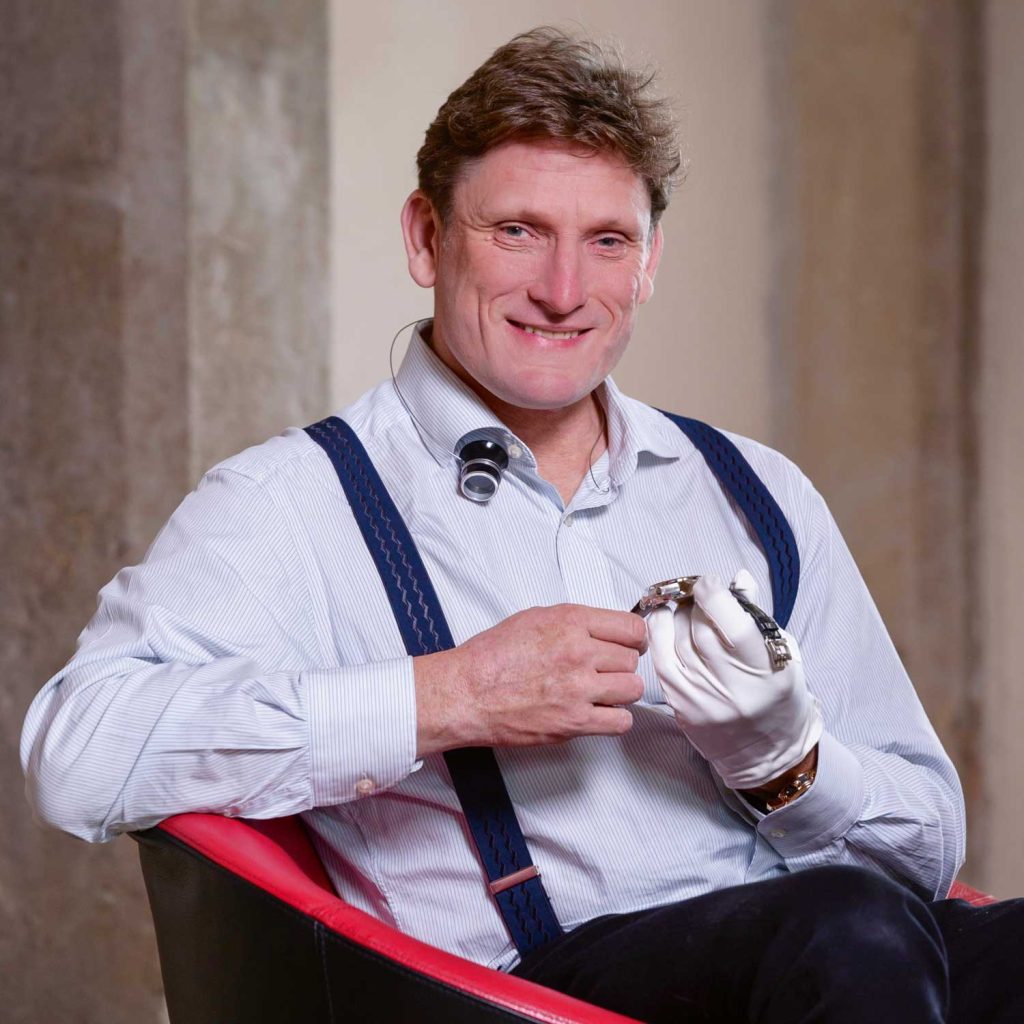
Stephen Forsey
You recently attended Dubai Watch Week (DWW) in London. I was surprised at the quality and quantity of British watchmakers. What is your take on the industry in the UK today?
DWW is a great initiative for the watch community and holding it in London was a great chance to showcase British watchmaking. It shows that there is an interest in watchmaking around the world and that it is not uniquely Swiss. My fellow panelists, Peter Speake-Marin, Richard Stenning and I, witnessed the demise of London watchmaking when the London School of Horology was transferred from Hackney to Epping College. Funding was withdrawn in the early 2000s but thankfully a group of semi-retired students established the Epping Forest Horology Centre with support from the BHI and today it continues independently as a charitable entity.
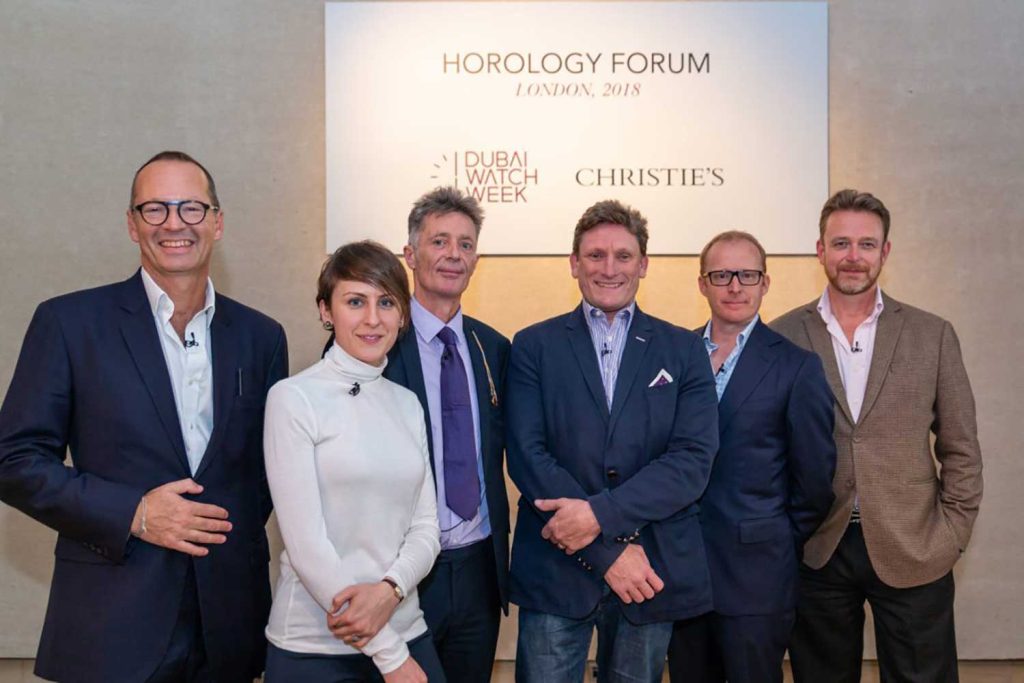
Panelists at the DWW Horology Forum, from left: Dr Andrew Hildreth, Dr Rebecca Struthers, Richard Stenning, Stephen Forsey, Roger Smith OBE, Peter Speake-Marin
You have said that independence allows you the freedom to create without the pressures of having to sell a product. Are there really no commercial considerations?
None that I can think of. Robert [Greubel] and I start with an idea, and going right back to the start of our company with the QP, we would never have made it if we had thought about a price point – the same with the Grande Sonnerie. Of course, our projects need to pay their way, but where there is a price constraint there are limitations. Independence absolutely affords freedom – look at the Double Impulse Chronometer Wristwatch that Frodsham has just revealed: it took a decade to make, but they stuck to their guns and they did it their way.
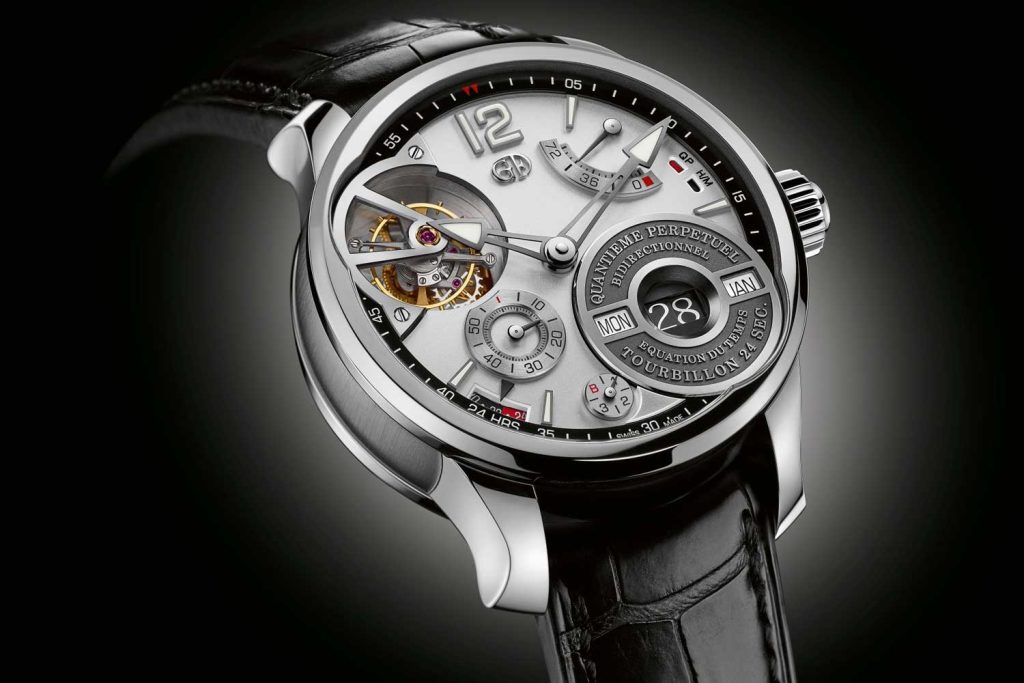
Greubel Forsey QP À Équation 2015
Is life easier than if you were working at a bigger brand?
There is a difference between product and innovation but that does not mean that the pressures and challenges are insignificant. Robert and I are very lucky. We have mutual professional respect that allows us to do more than if we were working alone. We have our own centres of responsibility – Robert is involved with creation and strategy and I am more on the R&D and technical side. We can do a lot more that way. It has helped us to create a bigger team to safeguard and preserve the skills that we value. Sometimes it feels like we are navigating the ocean in a dinghy with a torn sail – every now and then we get good weather, but sometimes it rains like hell!
What is the process for making a new watch?
When we first started working together, Robert and I had already made tourbillons in the classical way and we knew there was a cul-de-sac, where performance couldn’t be improved any more. Back in the mid-1990s, the watch press was saying that tourbillons were a gimmick and that mass-produced movements were just as good. So, Robert and I started to look back to Abraham-Louis Breguet. We knew a wristwatch was different to a pocket watch as it moves in space and we had a Eureka moment when we suddenly realised that placing the escapement and tourbillon at an incline was the way forward. We started with 30 degrees and knew we could build on this. With our QP, we set ourselves an ideal and we kept on going until we got there.
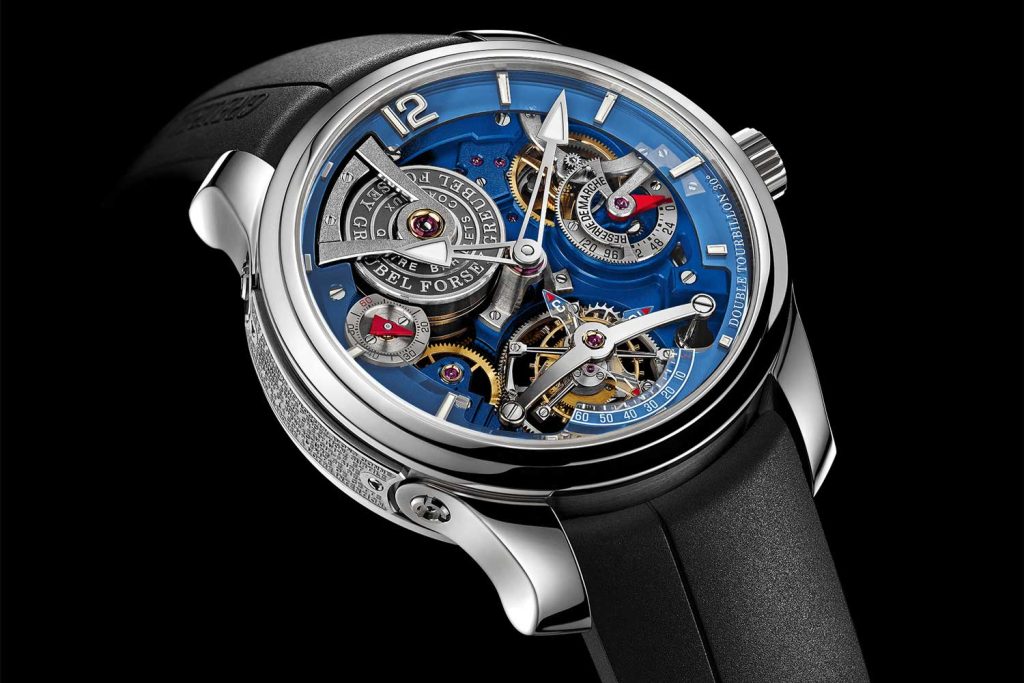
Greubel Forsey Double Tourbillon 30° Technique
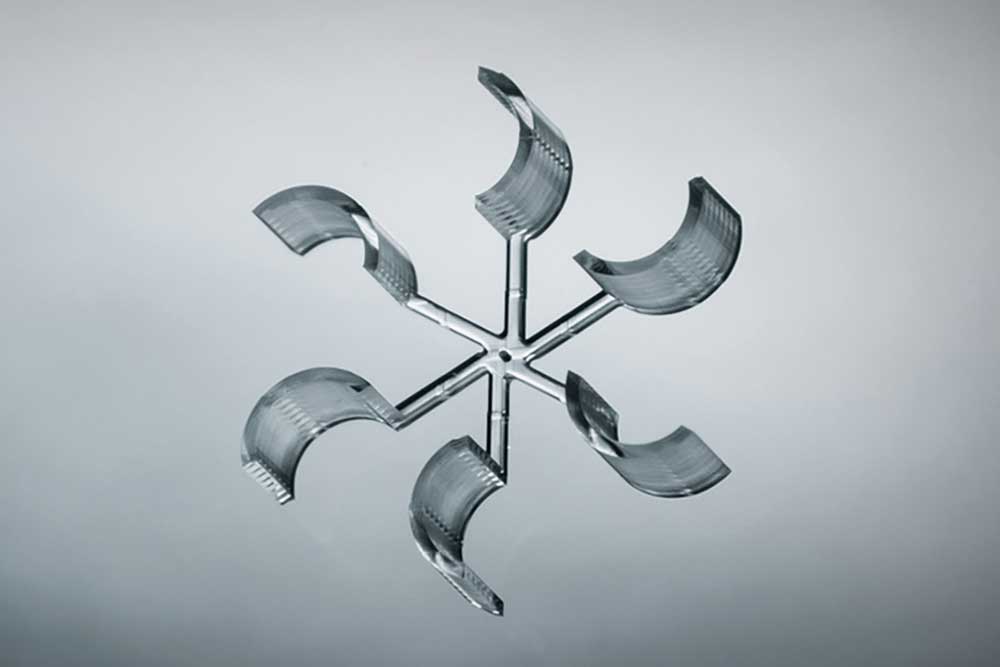
Mechanical Nano propulsion wheel driven by air turbulence
Tell me about EWT.
Experimental Watch Technology is the name we have given to our in-house watch laboratory. Robert and I quickly realised that we needed a lab and equipment to allow us to study the mechanical watch in detail. Each watch is an algebraic equation with one “x” unknown. When we find it, we add to the experiment and break new ground. This is unique – usually there is a marketing strategy behind development but, as watchmakers, this is not our reason. We want to innovate and keep skills alive because we believe the mechanical watch has a place in the world.
People ask if a Greubel Forsey could ever be as good as a quartz watch. Well, before Einstein nobody thought anything could move at the speed of light, but now we have the Large Hadron Collider. There is a razor edge between accepting defeat and refusing to accept it. Even if a project isn’t completed, we always learn something from it.
Almost everything you do is dedicated to greater accuracy and then you throw in a surprise like the Art Pieces or the 3D globe on the GMT Earth. Is this Greubel Forsey being disruptive?
Not consciously. We became known for precision because of our work with tourbillons, but we always had other projects we wanted to work on. The inspiration for our GMT came from our personal travel, sitting on a long-haul flight, looking at the information on a 2D screen where it is shown as a straight line. Robert and I wanted to give ourselves back a realistic visual. If you look at your smartphone and it tells you it is 9.45pm, your brain has to position and process that to work out the time. When you look at a watch, you’re not always looking for the exact minute. And so, with our GMT globe, it’s iconography. From the North Pole, you can easily see that in Europe it is lunchtime, in the US it is night and in Asia it is evening – there is no need to compute anything. You simply interpret it.
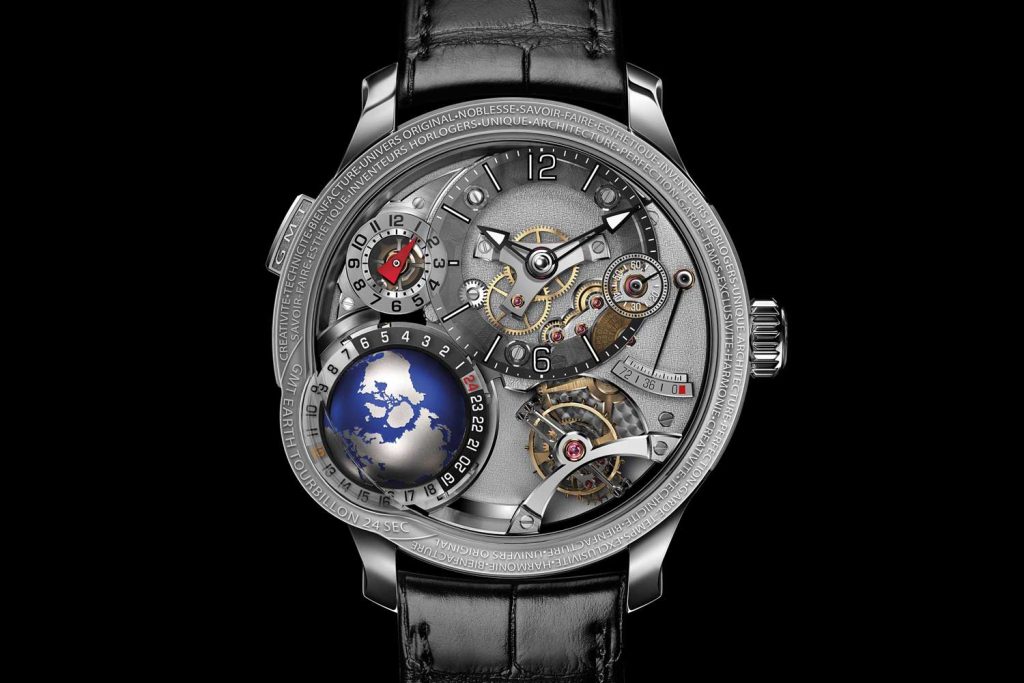
Greubel Forsey GMT Earth
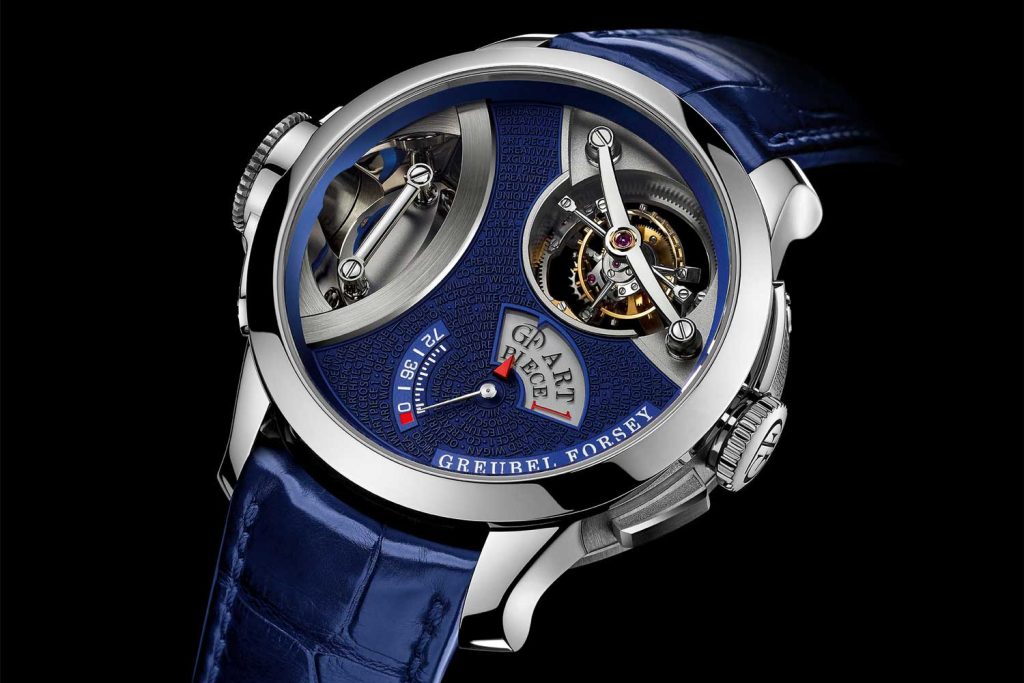
Greubel Forsey Art Piece 1










